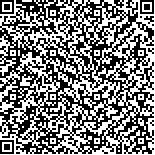罗子芮,林广勇,罗海军,等.发散式体外冲击波治疗肩峰下撞击综合征的近期疗效观察[J].中华物理医学与康复杂志,2020,42(2):161-165
扫码阅读全文

|
| 发散式体外冲击波治疗肩峰下撞击综合征的近期疗效观察 |
|
| |
| DOI:DOI:10.3760/cma.j.issn.0254-1424.2020.02.017 |
| 中文关键词: 发散式体外冲击波 肩峰下撞击综合征 肩关节功能评分 简明健康调查量表 |
| 英文关键词: Radial extracorporeal shock wave therapy Subacromial impingement syndrome Constant-Murley scoring Shock wave therapy |
| 基金项目: |
|
| 摘要点击次数: 5535 |
| 全文下载次数: 7193 |
| 中文摘要: |
| 目的 观察发散式体外冲击波(rESWT)治疗肩峰下撞击综合征(SIS)的近期疗效。 方法 选取2017年10月至2019年4月期间在我院康复科就诊的106例SIS患者作为研究对象,采用随机数字表法将其分为rESWT组、运动组及常规理疗组。3组患者均积极配合家庭康复锻炼,rESWT组在此基础上辅以发散式体外冲击波治疗,运动组则辅以系统运动训练(包括关节活动训练、关节控制训练及肌腱拉伸训练等),常规理疗组则辅以痛点超激光及低周波治疗。于治疗前、治疗1个月后分别采用Constant-Murley肩关节功能评分(CMS)、简明健康调查量表(SF-36)对3组患者肩关节功能及生活质量进行评估。 结果 治疗前3组患者CMS、SF-36各项指标评分组间差异均无统计学意义(P>0.05)。治疗后运动组CMS疼痛评分、总分明显优于常规理疗组水平(P<0.05);rESWT组疼痛、日常生活、运动范围、肌力评分及总分[分别为(13.9±2.1)分、(16.6±3.0)分、(34.1±5.1)分、(23.4±6.8)分及(87.9±6.8)分]均明显优于运动组及常规理疗组水平(P<0.05)。运动组SF-36生理职能、躯体疼痛、一般健康、精力4个维度评分均明显优于常规理疗组水平(P<0.05);rESWT组生理职能、躯体疼痛、一般健康、精力、精神健康5个维度评分[分别为(87.5±15.2)分、(83.2±11.2)分、(80.9±9.7)分、(82.9±8.6)分及(85.9±7.6)分]均明显优于运动组及常规理疗组水平。 结论 rESWT对SIS患者具有良好的近期疗效;与运动康复疗法及常规物理疗法比较,SIS患者经rESWT治疗1个月后其肩关节功能、生活质量均能获得更显著改善。 |
| 英文摘要: |
| Objective To analyze the short-term therapeutic efficacy of radial extracorporeal shock wave therapy for patients with subacromial impingement syndrome. Methods A total of 106 patients diagnosed as having subacromial impingement syndrome between October 2017 and April 2019 were randomized into a radial extracorporeal shock wave therapy (rESWT) group of 36, an exercise rehabilitation group of 35 and a conventional therapy group of 35. In addition to family exercise therapy, the rESWT group underwent 2000 to 2500 shots of extracorporeal shock wave therapy at 10 Hz and a pressure of 1.5-2.5 bar, once a week for four consecutive weeks. The exercise group was given range of motion exercises, joint control training and tendon movement training for 45 minutes, three times a week for four consecutive weeks. The conventional therapy group was treated with a laser apparatus and low-frequency electrotherapy, once a day, three times a week. Constant-Murle scores (CMSs) and the short form health survey (SF-36) were used to evaluate the clinical efficacy before and after 1 month of treatment. Results Before the treatment there were no significant differences among the 3 groups in any of the measurements. After one month of treatment the average CMS pain score and total score of the exercise rehabilitation group were significantly better than the conventional therapy group′s averages. Moreover, the average body pain score, daily life ability, range of motion, muscle strength and total score of the rESWT group were all significantly better than the exercise and conventional therapy groups′ averages. In the SF-36 the average physical function, bodily pain, general health, and mental health scores of the rESWT groups were also significantly better than the other 2 groups′ averages. Conclusions Radial extracorporeal shock wave therapy is superior to exercise therapy and conventional therapy for patients with subacromial impingement syndrome. It can restore shoulder joint function and improve the quality of life in one month. |
|
查看全文
查看/发表评论 下载PDF阅读器 |
| 关闭 |
|
|
|